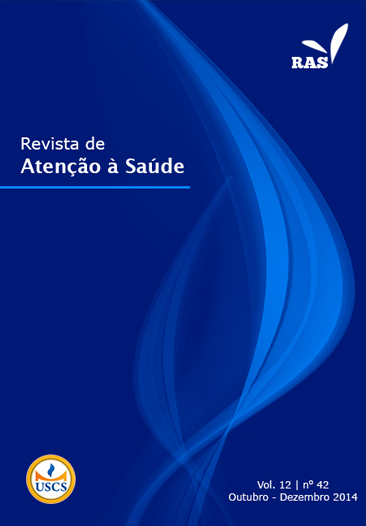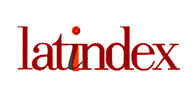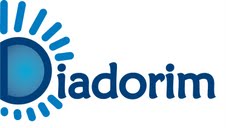INFLUÊNCIA AGUDA DO ALONGAMENTO ESTÁTICO E DO AQUECIMENTO AERÓBIO NO DESEMPENHO DA FORÇA MUSCULAR EM 10 REPETIÇÕES MÁXIMAS
DOI:
https://doi.org/10.13037/rbcs.vol12n42.2309Keywords:
Educação Física, aquecimento aeróbicoAbstract
Introdução: Durante o treinamento de força, os praticantes realizam vários tipos de rotinas pré-treino, mas, na sua maioria, não sabem qual a fundamentação desta preparação, portanto este estudo tenta fornecer informações que facilitem a escolha destas atividades. Objetivo: Avaliar a influência aguda do aquecimento aeróbio e do alongamento estático no desempenho da força máxima gerada em 10 repetições máximas. Materiais e métodos: Participaram deste estudo dez sujeitos do sexo masculino praticantes de musculação. Dias após a determinação da carga correspondente a 10 repetições máximas no exercício leg press, os voluntários realizaram o máximo de repetições possíveis com a mesma carga obtida anteriormente com a precedência de aquecimento aeróbio ou alongamento estático. Resultados: Em relação à média obtida nas repetições em cada série, não foi encontrada diferença significativa entre as duas primeiras séries. Para as terceiras séries, foi encontrada diferença significativa entre os protocolos da mesma série. Observou-se diminuição da força muscular na terceira série do exercício, devido a fatores neuromusculares. Conclusão: Sugere-se que alongamentos nesse volume não sejam feitos antes de exercícios que requeiram grande produção de força.
Downloads
References
Winett RA, Carpinelli RN. Potential health-related benefits
of resistance training. Preventive Medicine. 2001; 33:
503-513.
2. Carpenter D, Nelson B. Low back strengthening for health,
INFLUÊNCIA AGUDO DO ALONGAMENTO E DO AQUECIMENTO AERÓBIO 21
Revista de Atenção à Saúde, v. 12, no 42, out./dez. 2014, p.17-21
rehabilitation, and injury prevention. Medicine & Science
in Sports & Exercise. 1999; 31: 18-24.
3. Fleck SJ, Kraemer WJ, RIBEIRO JL. (Trad.). Fundamentos
do treinamento de força muscular. 3 ed. Porto Alegre, RS:
Artmed; 2006.
4. Simão R, Giacomini MB, Dornelles TS, Marramon MG,
Viveiros LE. Influência do aquecimento específico e da flexibilidade
em um teste de 1 RM. Rev Brasileira de Fisiologia
do Exercício. 2003; 2: 134-40.
5. Robergs RA, Roberts SO. Princípios fundamentais de fisiologia
do exercício para aptidão, desempenho e saúde. São
Paulo: Phorte; 2002.
6. Behm DG, Button DC, Butt JC. Factors affecting force
loss with prolonged stretching. Canadian Journal Apply
Physiology. 2001; B26: 261-72.
7. Simão R, Senna GW, Nassif L, Leitão N, Arruda R, Priore
M, Maior AS, Polito MD. Influência dos diferentes protocolos
de aquecimento na capacidade de desenvolver carga
máxima no teste de 1RM. Fitness & Performance Journal.
2004; 5: 261-5.
8. Baechle TR, Earle RW. Essentials of strength training and
conditioning. Champaign: Human Kinectics, 2000.
9. Ribeiro FM, Oliveira F, Jacinto L, Santoro T, Lemos A,
Simão R. Influência aguda do alongamento passivo e do
aquecimento específico na capacidade de desenvolver carga
máxima no teste de 10RM. Fit Perf J. 2007; 6(1): 5-9.
10. Karvonen M. et al. The effect of training on heart rate. A longitudinal
study. Ann Med Exp Biol Fenn. 1957; 35: 307-315.
11. Fermino RC, Winiarski ZH, Rosa RJ, Lorenci LG, Buso
S, Simão R. Influência do aquecimento específico e de
alongamento no desempenho da força muscular em 10 repetições
máximas. Rev Brasileira de Cineantropometria e
Desenvolvimento Humano. 2005; 13(4): 25-32.
12. Fermino RC, Kotaba C, Santos A, Zen V, Simão R, Polito
M, Monteiro W. Influência de diferentes aquecimentos no
desempenho da força muscular. Rev Bras Fisio Exerc. 2004;
3: 249-56.
13. Francisco RV, Lima, AJG, Cosenza PI. Efeito agudo do
alongamento e de ambos no número máximo de repetições
realizadas com 80% de 1RM no supino. IN: XXVll
Simpósio Internacional de Ciências do Esporte. Rev Bras
Cien Mov. 2004; 12: 223.
14. Tricoli V, Paulo AC. Efeito agudo dos exercícios de alongamento
sobre o desempenho de força máxima. Rev Atividade
Física e Saúde. 2002; 7: 6-13.
15. Kubo K, Kanehisa H, Kawakami Y, Fukunaga T. Influence
of static stretching on viscoelastic properties of human tendon
structures in vivo. J Appl Phys. 2001; 90: 520-7.
16. Fowles JR, Sale DG, MacDougall JD. Reduced strength after
passive stretch of the human plantarflexors. J Appl Phys.
2000; 89: 1179-88.
17. Shrier I, Gossal K. Myths and truths of stretching. Phys
Sportsmed. 2000; 28: 18-25.
18. Kokkonen J, Nelson AG, Cornwell A. Acute muscle stretching
inhibits maximal strength performance. Research
Quarterly for Exercise and Sport. 1998; 69: 411-15.
Downloads
Published
Issue
Section
License
Copyright (c) 2014 Rafael André Araujo, Rodrigo Alves França, Ruan Diego Schiestl

This work is licensed under a Creative Commons Attribution-NonCommercial-NoDerivatives 4.0 International License.
Policy Proposal for Journals offering Free Delayed Access
Authors who publish in this magazine agree to the following terms:
- Authors maintain the copyright and grant the journal the right to the first publication, with the work simultaneously licensed under a Creative Commons Attribution License after publication, allowing the sharing of the work with recognition of the authorship of the work and initial publication in this journal.
- Authors are authorized to assume additional contracts separately, for non-exclusive distribution of the version of the work published in this magazine (eg, publishing in institutional repository or as a book chapter), with the acknowledgment of the authorship and initial publication in this journal.
- Authors are allowed and encouraged to publish and distribute their work online (eg in institutional repositories or on their personal page) at any point before or during the editorial process, as this can generate productive changes, as well as increase impact and citation of the published work (See The Effect of Open Access).









